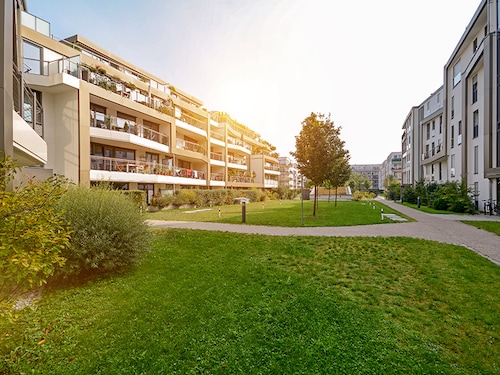RBI goes on the offensive; tweaks real estate lending norms to spur growth
Relief to big-ticket loans; home loan rates expected to ease, say experts


 Credit: Shutterstock
Credit: Shutterstock
The Reserve Bank of India has turned more proactive in its attempt to kick-start growth for the real estate sector to boost economic activity, which has contracted rapidly in the three months to June, due to the near-complete lockdown to battle the Covid-19 pandemic. Through its latest policy move on Friday, the RBI has tried to create “an enabling environment” towards all housing projects and not just limit it to affordable housing.
When banks give a loan to a customer, it needs to set aside a percentage of the loan in the form of provisioning, to cover any default. This is the risk weightage for a loan. The riskier the lending, the higher is the weight for the bank.
Until today’s policy decision, this percentage was decided on the basis of the size of the loan and the loan-to-value (TV) ratio. An LTV for a home loan is the percentage of the property which the bank will finance and the rest is brought by the buyer. Now the RBI says the LTV is the only criteria.
Now loans shall carry a risk weight of 35 percent if the LTV is 80 percent or less, irrespective of the loan amount. If the LTV is more than 80 percent but less than 90 percent, then the risk weight is 50 percent. A lower risk weight justifies a lower home loan rate. “Now the RBI wants to put the thrust on overall housing and not only keep focusing on affordable housing,” said Sudhin Choksey, formerly managing director and CEO at Gruh Finance and now executive director at Bandhan Bank.
The RBI directive will be for all loans sanctioned from now to March 31, 2022.
This move will lure customers who sat on the fence all this time, unsure if loans would get more attractive. They will be in a position to take a decision quicker as home loan rates become more attractive. Lenders will be able to release more capital, so larger, premium housing projects will hopefully benefit.
“This measure is expected to give relief to big ticket loans say above Rs 75 lakh, present share of which is around 12-15 percent of the total housing loan portfolio, where risk weight is higher. Assuming a growth of 20 percent for next 18 months, this could reduce the capital requirement of around Rs 500 crore, which could enable banks to ease rates to boost demand,” says Soumya Kanti Ghosh, group chief economic advisor at the State Bank of India (SBI).
The RBI also introduced various liquidity measures and policies to improve credit flow into the system which was crippled over the past year. The bank kept interest rates unchanged and instead decided to focus on improving the environment for growth, as inflation is relatively under check. For the first time since the onset of the pandemic, the RBI disclosed its growth forecast, of a contraction of 9.5 percent in FY21.
“The decision on rationalising the risk weights for all new housing loans and the relaxation extended for the LTV shall give the much needed impetus for the housing sector. At the same time, home loans will become accessible and competitive for the customers,” says Hardayal Prasad, managing director and CEO of PNB Housing Finance. “This will also lead to the desired recovery of the construction sector,” Prasad added, which will boost employment and jobs.
HSBC’s chief India economist Pranjul Bhandari said the RBI was “clearly focused on reviving growth” after a deep contraction in the June quarter. “We believe that as headline inflation falls towards target by December 2020, RBI could cut the policy repo rate by 25 basis points in February 2021, taking it to 3.75 percent.”
First Published: Oct 09, 2020, 19:50
Subscribe Now